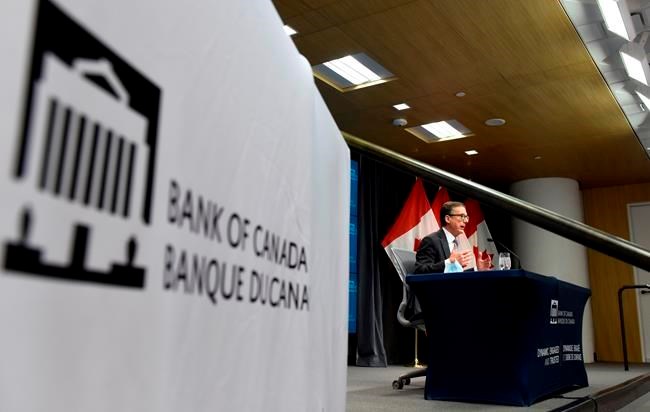TORONTO — It’s been a tough run for bond markets as investors anticipate central bank interest rate rises like the Bank of Canada’s move this week, but financial advisers say it’s still important to have hedges in your portfolio to balance the risks in holding stocks.
“There's an awful good reason to have some bond exposure as part of a well-balanced, well-diversified portfolio,” said Steve Locke, head of fixed income at Mackenzie Investments.
“The reason is that the high quality bonds market and government bond markets in the developed world will act as a buffer against volatility.”
Market volatility, which was already increasing in anticipation of rising rates, has ratcheted up after Russia’s invasion of Ukraine created uncertainty and pushed oil and commodity prices higher.
But while the conflict has made the rate hike path a little less clear, long-term bonds are still tough to hold since as interest rates rise, or are expected to rise, existing bonds at lower rates are less attractive so prices get pushed down.
To maintain bond exposure while minimizing losses, Locke advises investors look to bond options that respond better to inflationary pressures and interest rate rises.
“Investors should be thinking about diversity in their bond portfolios. Owning a little bit of floating rate exposure, owning some inflation protected exposure in the bond market, as well as owning traditional high-quality bond products.”
Floating rate bonds respond to interest rate changes, while inflation-tied bonds, such as real return bonds in Canada or treasury inflation protected securities in the U.S., respond to rising prices.
Investors could also consider stable alternatives to bonds, such as debt income products like floating rate loans or private credit to offset volatility, he suggests. There are increasing options for private credit, including a new fund that Mackenzie launched in January to provide more access to the market.
Guaranteed investment certificates are also a predictable place to park some cash, but Locke said GICs are more of a savings product that doesn’t provide much of a hedge against equity markets.
“The price of the GIC doesn't adjust upward, whereas the price of traditional bonds, or higher quality bond markets, adjust upward when equities are correcting.”
GICs could become more attractive as interest rates rise, but central banks may take some time to raise rates, and Canadian banks could delay matching those higher rates for weeks or even months, said Tina Tehranchian, a certified financial planner at Assante Capital Management Ltd.
She said that on the bond side, investors should focus more on short-term bonds, since the longer the duration the greater the penalty to rising interest rates. Shorter terms mean lower returns, but likely worth it given the greater negative returns currently on long-term options.
“It’s better to settle for more modest rates of return and preservation of capital.”
For older Canadians, Tehranchian also suggested some consider life annuities, which have fallen out of favour given low interest rates, but which provide tax advantages over some other investment types.
“Life annuities can be a very interesting source of income for retirees.”
For those looking to income generation, she suggested well-established dividend stocks and real estate investment trusts options to offset inflation and volatility.
Overall, given all that’s happening in markets and the world, she said it’s a good time to take a look at your risk exposure and the balance of your holdings.
“It's definitely a good time to re-evaluate portfolios, not just in terms of exposure to bonds, that’s one component of it, but also the type of stocks that you hold.”
This report by The Canadian Press was first published March 3, 2022.
Ian Bickis, The Canadian Press

